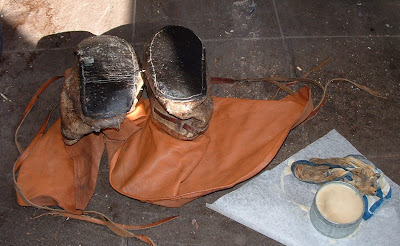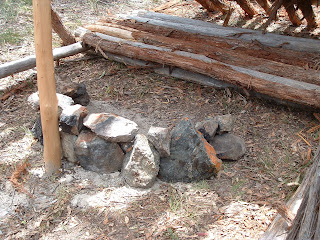Appleberry fruits were valued as an Australian bush food for Australian aborigines as well as new settlers. Appleberry is a bush climber with slender stems and narrow (linear-lanceolate) dark green leaves. It flowers profusely from August to January with a mass of tubular greenish-yellow flowers which give way to shiny green, then purple sausage shaped berries.
The flowers attracts honey eaters, and the fruit when ripe has a mealy texture and a pleasant apple flavour with just a hint of aniseed. Appleberries do not ripen until they have fallen from the vine, the ripe fruit are collected from the ground below the plant. Not only are they difficult to spot amongst the undergrowth, they also feature in the diet of many bush inhabitants, and the collector faces strong competition for ripe fruit.
The flowers attracts honey eaters, and the fruit when ripe has a mealy texture and a pleasant apple flavour with just a hint of aniseed. Appleberries do not ripen until they have fallen from the vine, the ripe fruit are collected from the ground below the plant. Not only are they difficult to spot amongst the undergrowth, they also feature in the diet of many bush inhabitants, and the collector faces strong competition for ripe fruit.
The Aboriginal people had an ingenuous way of preventing the loss of the fruit by picking them while they were still green and hard on the vine, and roasting them over hot coals.
The species is an evergreen sprawling groundcover or climber, with wiry, red to brown-grey stems up to 3 metres long. In an open position the form may take that of a small shrub to 1.5 m high. The shoot tips are very hairy, with a fine white fringe.
Pendulous bell-shaped flowers develop on the end of stems or on short branchlets in spring and summer. These 1-2 cm long flowers are borne on slender stalks, singly or in groups of 2-3. Each flower has five bright yellow-cream petals that tinge with purple as the flower ages. The petal tips reflex as the flower opens.
Flowers may persist on the plant as the first fruit develop. An oblong berry, 2 cm long and 1 cm wide forms in summer. The fleshy green and purple fruit turns yellow when ripe. Fruit may be eaten raw when it has fallen to the ground, or roasted if still green. The skin is hairy and similar to peach and the sweet astringent flavour similar to kiwifruit.
The hairy leaves are narrowly oval, mid green, 0.5 cm wide and 5 cm long. The leaves have a wavy, sometimes recurved margin. The underside of the leaf is pale-green and silky.
Tolerance of a range of conditions and a climbing but not invasive habit make this plant a useful addition to any garden. Billardiera scandens is suitable as a climber over other plants or as an attractive potted, hanging basket or rockery specimen. Planted under Eucalyptus, cultivated Billardiera scandens can thrive under conditions challenging for most garden plants. Honeyeaters are attracted to the nectar.
There are other types & colours of Appleberry, but this is the type that grows here in Wychwood Forest.















































